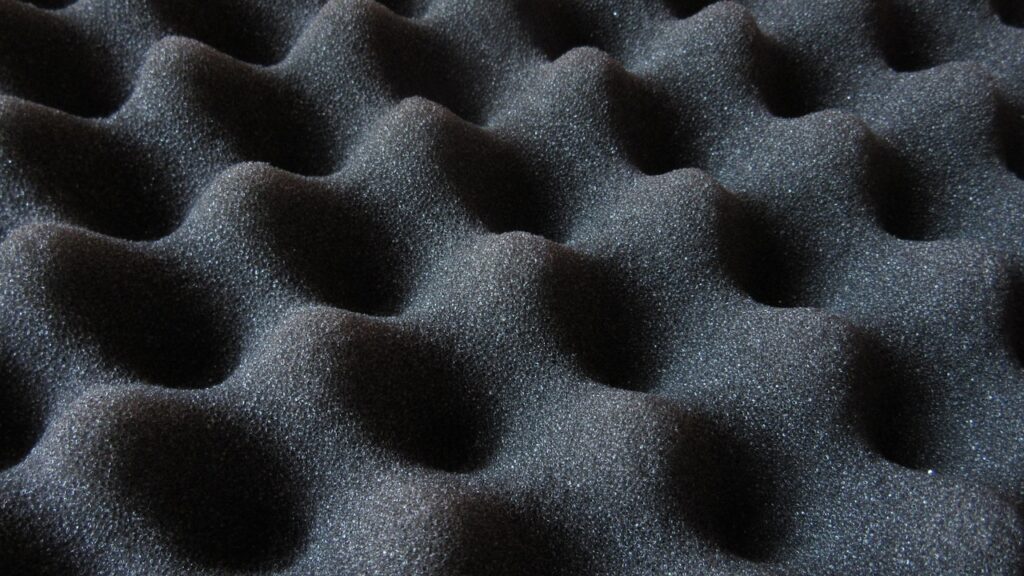Author: CELLMAT
Foams are applied in different industrial sectors such as as building/construction, packaging or automotive. The formulations used to produce current foams in the market are mostly based on fossil-based polymers such as polyolefins, polystyrene, polyurethanes among others, or even blends of them. They are also quite complex since many additives for different purposes are used, such as chemical blowing agents to generate the gas needed to expand the foam, crosslinking agents to improve the stability of the polymer matrix during foaming, or even nucleating agents to reduce cell size.
Fillers may also be included to reduce the thermal conductivity (infrared blockers), to improve the fire resistance (flame retardants), or simply to improve the mechanical performance. In most cases, these additives are still present in the final foam. For instance, most chemical blowing agents leave significant traces of solid residues after the gas is released. This makes the recycling of foams very challenging, especially when it comes to crosslinked or thermostable foams such as PU. For this reason, the use of bionanocomposites, based on biopolymers reinforced with biofillers to improve either the foaming mechanisms or the final physical properties, is a very attractive option for foam formulations.
Which solution does Bionanopolys offer?
The BIONANOPOLYS network has foaming pilot plants that are very promising for the development of new biofoams. There is one pilot plant for extrusion foaming and one for bead foaming technology. Both work with physical blowing agents. This means that the blowing agent needed to foam the polymer is a gas or liquid that is injected into the polymer under high pressure until saturation occurs. As the foam expands, the gas diffuses out of it without leaving a solid residue in the final product. This is an advantage for biofoams because compostability is not affected. In addition, these physical foaming processes are designed to expand the foam when the melt strength of the polymer is optimal. This is especially ideal for compostable biopolymers, whose melt strength is generally poor for foaming and crosslinking is not an option.
These pilot plants have been upgraded during BIONANOPOLYS to work with bionanocomposites, so there are many ways to improve foaming performance and final cell structures. For example, cell size can be significantly reduced by using very small amounts of bionanoparticles dispersed very efficiently in the polymer matrix. This reduction in cell size can in turn reduce the thermal conductivity of the foam or improve mechanical performance, to name just a few aspects. We are now testing bionanocomposites for foaming provided by our partners in the consortium.
Application fields
The extrusion foaming process is a continuous technology used nowadays to produce foams mainly for thermal insulation of buildings and for packaging in the food market. Although thermal insulation is a long-term application where composting is not a problem, the market is pushing for more environmentally friendly materials that can reduce the carbon footprint, so bio-based formulations are also being sought for foaming. As for the packaging market, the need for compostable options is very high because they are single-use products. Current foams produced by extrusion foaming for these applications are mainly based on polystyrene (XPS foams).
Bead foaming is a batch process in which the polymer is foamed in the form of small beads that are then welded together in a steam chest moulding process. This process offers several advantages to the foam market, as it can produce non-crosslinked, low-density foams with complex 3D shapes. In addition, the way the foam expands and stabilises allows foaming of polymers not specifically designed for this application. Expanded polypropylene (EPP) is the main application. This foam is often used in cars because they are rigid and at the same time very light. In addition, expanded TPU is often used in sports, such as in the soles and midsoles of training shoes. Expanded polystyrene (EPS) for protective packaging can also be produced by bead foaming. In this application, compostable biopolymers are more attractive.
What has been achieved so far?
The BIONANOPOLYS project has allowed us to test the foamability of several biobased or compostable polymers using these foaming technologies. So far, CELLMAT has been able to produce PLA foams with low densities and fine cellular structures using both technologies. In addition, other compostable biopolymers such as PBS and bioderived options such as bio-PE and bio-EVA have also been foamed using bead foaming. We are currently developing foamed prototypes for several applications using bionanocomposites developed in collaboration with our partners in the project, and the first results are very promising.

